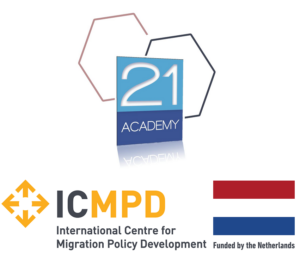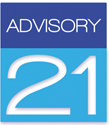Announcements
Academy Documents
Please access the Students' Policies & Forms through this link. The following documents are all available in the link - Student Handbook, Student Code of Conduct, Students' Privacy Notice, Deferral, Suspension, and Cancellation Policy, Assignment Extension Policy, Re-Sit Policy, Complaints Procedure Policy, Equality Policy and Student Disciplinary Policy.
Sessions' Venue
All sessions will be held at:
Land Border Regiments Training School (LBRTS)
Georges Rahal Building
Rayak Air Base
Lebanon.
Lecture Schedule & Notes
Lecture notes are made available in advance. On the other hand, the presentations are only made available here once they have been delivered. Schedule dates are set but may change for any force majeure reason. All changes, if any, may be communicated via email.
| Lecture | Date | Time | Presentation | Notes (If Any) |
|---|---|---|---|---|
| Session 01 | 21 February 2023 | 08:30 to 16:00hrs | Presentation 01 | ABC Case Study |
| Session 02 | 22 February 2023 | 08:30 to 16:00hrs | Presentation 02 | Case Study 24 Learning Styles Q Listening Skills Self Assessment VAK Indicators and Self-Test |
| Session 03 | 23 February 2023 | 08:30 to 16:00hrs | Presentation 03 | Ozzobulla Exercise Sheet A Ozzobulla Exercise Sheet B Trainer Centred v Learner Centred Assumptions |
| Session 04 | 24 February 2023 | 08:30 to 16:00hrs | Presentation 04 | Learning Organisation |
Lecturer/s
Lecture Summaries & Suggested Reading
Lecture 1 - Training Best Practice and Training Needs Analysis
Following this one day programme, students will be able to:
- Define Training, Learning and Development
- Identify the purpose and benefits of Training
- Become aware of the different Types of Training
- Understand the various Roles of Trainer and when best to use
- Learn and aim to develop Trainer Competences and Skills
- Understand the importance of the Training Cycle: - Training Needs Analysis; Training Design; Training Delivery; Training Evaluation
- Become aware of the different methods to assess training needs – at Organisational; Work/Task/Person level
- Assess the Training Needs of one’s target group, what motivates them and what are their expectations
Core Reading List
- Simmonds, D., 2009. Designing And Delivering Training. London: CIPD.
- Training the Trainer: the Art of Training Delivery, 2nd edition (Skills Converged)
- O'Carroll, E., 2012. Train The Trainer. Dublin: Gill & Macmillan.
- Skills Converged, 2016. Training the Trainer: the Art of Training Delivery,
- Good, D. and McFadyen, C., 2018 101 Training Activities & How To Run Them.
Supplementary Reading List
- Ally, M., 2008. Foundations of educational theory for online learning. In The Theory and Practice of Online Learning
- West, E., 1999, The Big Book Of Icebreakers.
- Selwyn, N., Gorard, S. & Furlong, J., 2006. Adult learning in the digital age: information technology and the learning society, London Routledge.
Lecture 2 - Training Methods and Communication Skills
Following this one day programme, students will be able to:
- Gain Insight on various known Training Methodologies
- Identify advantages and disadvantages of various methods
- Understand what training techniques would be adequate for the subject matter, target group and training environment
- Develop techniques of effective group communication within a training environment
- Enhance verbal and non verbal communication skills for effective classroom and coaching delivery
- Understand how learners learn and how to adapt training to different learning styles- the ‘Experiential Learning Cycle’ Model – Experiencing; Reflecting; Generalising and Application as well as the ‘VAK’ Model – Visual; Auditory and Kinaesthetic
- Learn coaching skills which are useful to further ensure retention of classroom learning
Core Reading List
- Simmonds, D., 2009. Designing And Delivering Training. London: CIPD.
- Training the Trainer: the Art of Training Delivery, 2nd edition (Skills Converged)
- O'Carroll, E., 2012. Train The Trainer. Dublin: Gill & Macmillan.
- Skills Converged, 2016. Training the Trainer: the Art of Training Delivery,
- Good, D. and McFadyen, C., 2018 101 Training Activities & How To Run Them.
Supplementary Reading List
- Ally, M., 2008. Foundations of educational theory for online learning. In The Theory and Practice of Online Learning
- West, E., 1999, The Big Book Of Icebreakers.
- Selwyn, N., Gorard, S. & Furlong, J., 2006. Adult learning in the digital age: information technology and the learning society, London Routledge.
Lecture 3 - Training Design and Planning
Following this one day programme, students will be able to:
- Learn the characteristics of an Effective Training Programme
- Understand the Steps in Designing a Training Programme
- Effectively brainstorm; plan out and put pen on paper to identify which points are essential to bring across and how to ensure they are met
- Become aware of the effective use of Interactive Training Techniques
- Learn the Knowledge, Skills and Attitudes of what makes an Effective Trainer
- Training Planning and Organisation: Participants; Logistics; Venue; Documentation; Resources taking into account temporal and environmental and constraints.
- Learn skills on how to prepare any necessary material in a clear and understandable manner
- Consider the need to make any preparatory pre-session communications with potential participants
Core Reading List
- Simmonds, D., 2009. Designing And Delivering Training. London: CIPD.
- Training the Trainer: the Art of Training Delivery, 2nd edition (Skills Converged)
- O'Carroll, E., 2012. Train The Trainer. Dublin: Gill & Macmillan.
- Skills Converged, 2016. Training the Trainer: the Art of Training Delivery,
- Good, D. and McFadyen, C., 2018 101 Training Activities & How To Run Them.
Supplementary Reading List
- Ally, M., 2008. Foundations of educational theory for online learning. In The Theory and Practice of Online Learning
- West, E., 1999, The Big Book Of Icebreakers.
- Selwyn, N., Gorard, S. & Furlong, J., 2006. Adult learning in the digital age: information technology and the learning society, London Routledge.
Lecture 4 - Training Delivery and Evaluation
Following this one day programme, students will be able to:
- Effectively deliver one’s content in a clear and concise manner depending on the considerations with participants prior to the training itself
- Ensure they deliver the key ‘must’ know points and that they reach long term memory.
- Handle nerves, read the room and be flexible to change one’s delivery if one’s current approach is not working.
- Facilitate learning by building rapport; being learner centred as well as handling difficult trainees.
- Handle Q&A and discussion sessions effectively
- Receive feedback and make effective use of it for purposes of self improvement and enhancing delivery/planning techniques
- Understand the importance of Training Evaluation through the use of Kirkpatrick Model – Reaction; Impact; Learning and Results
Core Reading List
- Simmonds, D., 2009. Designing And Delivering Training. London: CIPD.
- Training the Trainer: the Art of Training Delivery, 2nd edition (Skills Converged)
- O'Carroll, E., 2012. Train The Trainer. Dublin: Gill & Macmillan.
- Skills Converged, 2016. Training the Trainer: the Art of Training Delivery,
- Good, D. and McFadyen, C., 2018 101 Training Activities & How To Run Them.
Supplementary Reading List
- Ally, M., 2008. Foundations of educational theory for online learning. In The Theory and Practice of Online Learning
- West, E., 1999, The Big Book Of Icebreakers.
- Selwyn, N., Gorard, S. & Furlong, J., 2006. Adult learning in the digital age: information technology and the learning society, London Routledge.
Methods of Assessment
Presentation 100% of final score
You will be asked to design and deliver a training programme in a field of your choice which should be
presented as follows.
A holistic training proposal which includes:
- The overall objective of the training
- Expected Learning Outcomes
- Pedagogical Guidelines and Procedures
- Reading List (if any)
- Training plan
You will be expected to deliver a 15-minute presentation on the designed training proposal including a mock delivery of a portion of the designed training.
The date when you have to deliver the presentation will be Monday, March 20, 2023, between 08:30 and 16:00 hrs.
Presentation
Please read, fill in and submit the Presentation Submission Form together with your presentation. This Presentation Submission Form includes the question which has to be addressed through your presentation,
This Presentation Rubric is being made available for your guidance. This is a performance-based assessment tool. Assessors will use the rubric to assist them to allocate scoring while it allows students to understand what is required in the presentation and how your presentation will be graded.
The presentation should be submitted in PDF format together with the through Turnitin by not later than Sunday 19 March at 23.59hrs. Do not scan the presentation but convert/save it directly to PDF. A copy of the presentation in original format (.ppt or .pptx) should also be sent via email on dls-training@hotmail.com.
Note that the submitted presentations will be scanned for plagiarism.
Referencing Style
Your assignments, presentations and reflective noted should be referenced using the Harvard Referencing style. Please follow this video to understand this referencing style. Harvard Referencing Style.
Submitting Presentations - Turnitin
You will receive and email from Turnitin in which you will be notified that you have been added to a "class" where you may upload your presentation. Presentation should be submitted by not later than 23:59 hrs. of the submission deadline shown on the Presentation Submission form and/or the "class".
At 21 Academy you can submit more than one draft of your presentation before the submission final deadline. The last version left uploaded at the submission deadline will be considered to be your final submission presentation and will be the one which will be assessed. Make sure that your final submission does not go beyond 20% similarity when including direct quotations (the sentences in-between quotes) as this will be considered as too high and presentation will not be assessed.
Follow this very short video to understand how to submit your assignment through Turnitin - submitting a paper
To understand the similarity report generated by Turnitin follow this 1 minute video - understanding the similarity report



Mohsen.joumaa
2 years agoI want a nice course to benefit